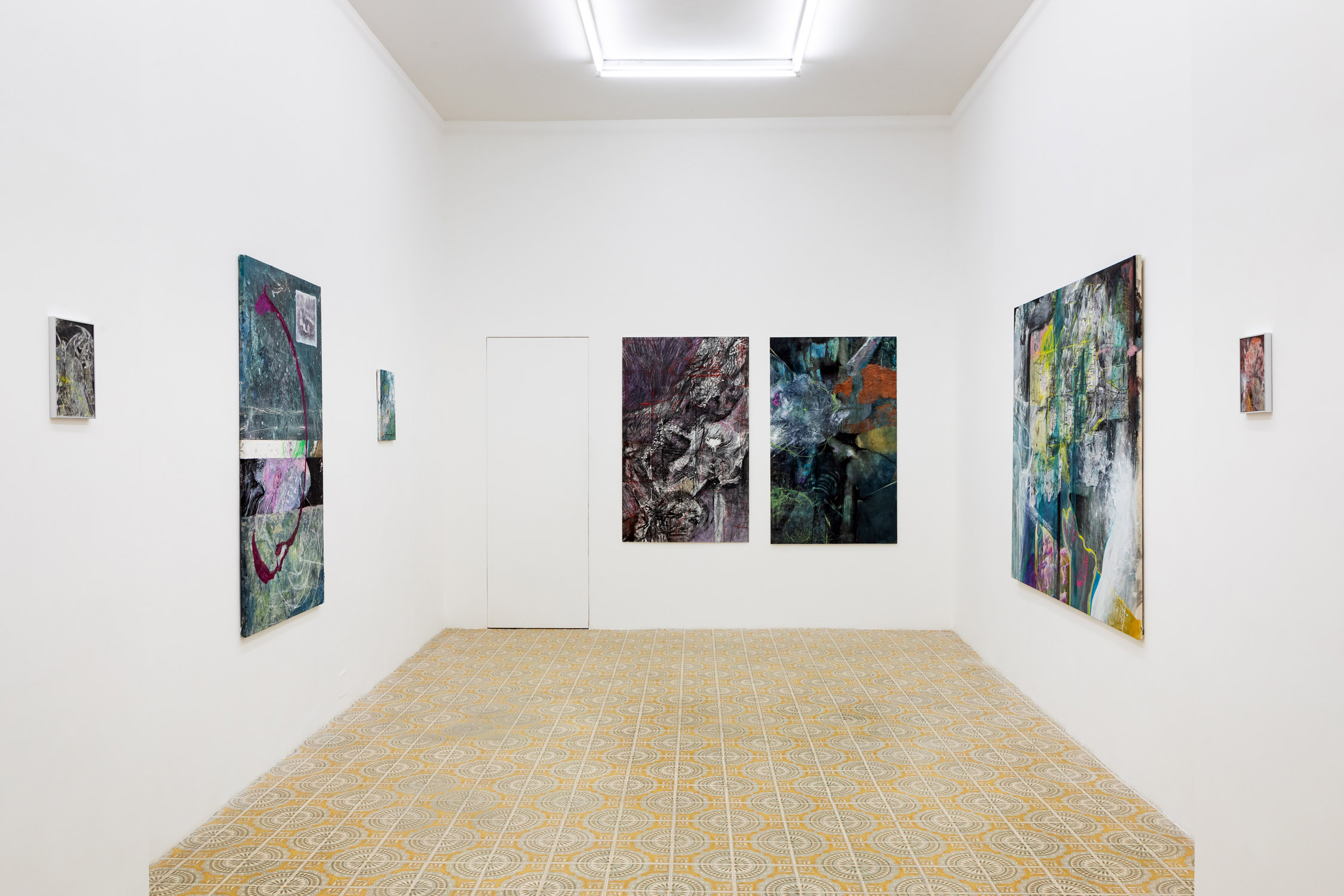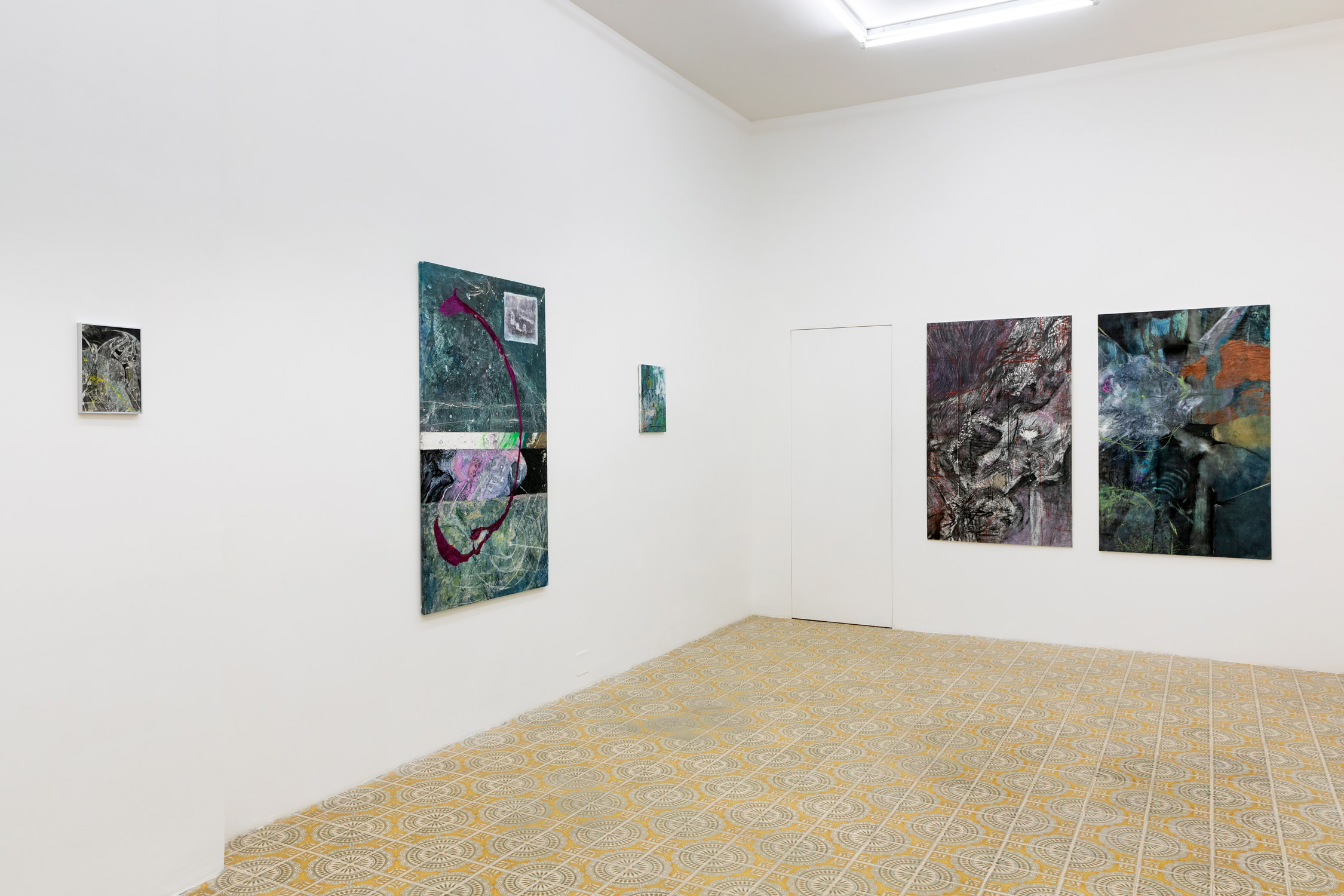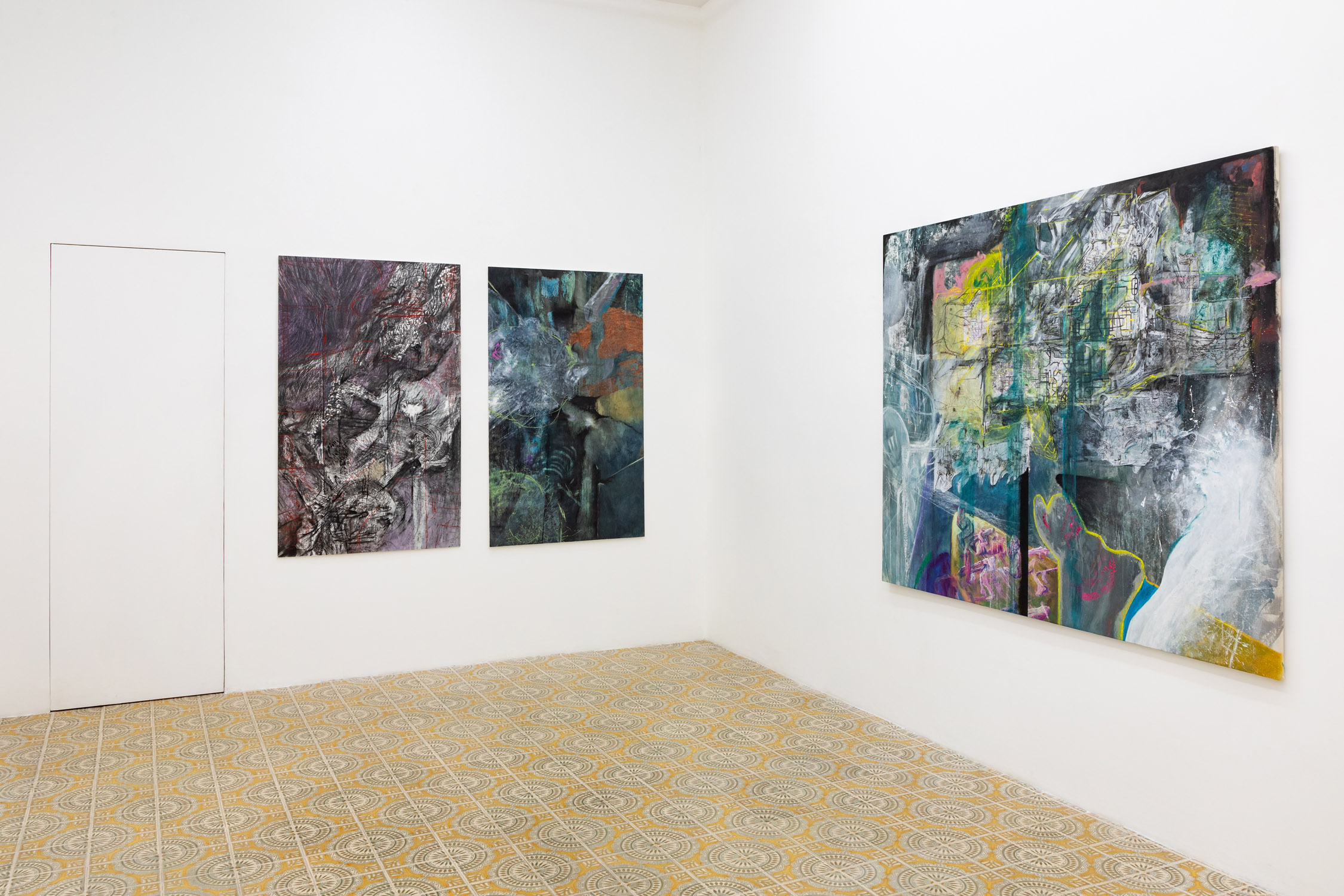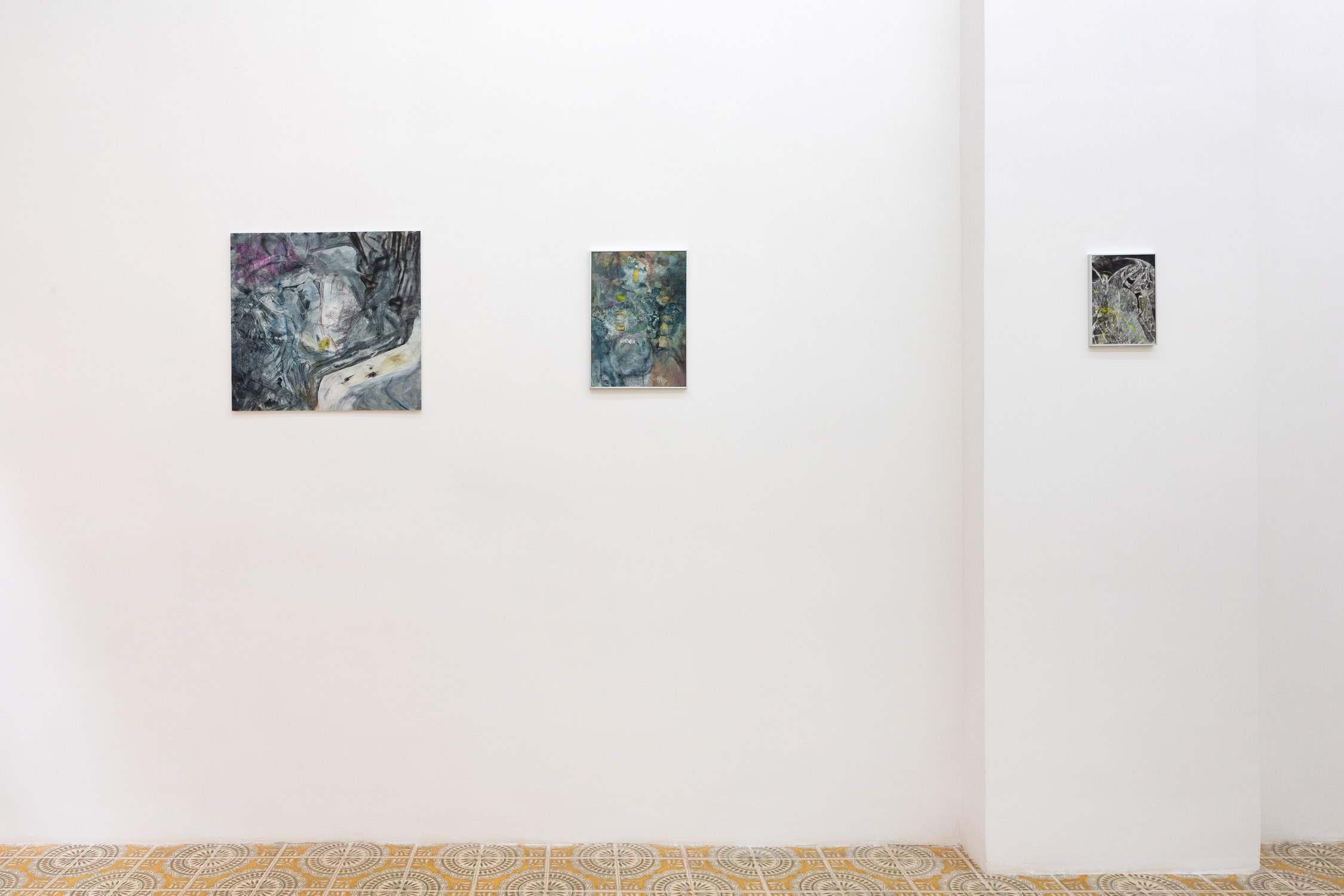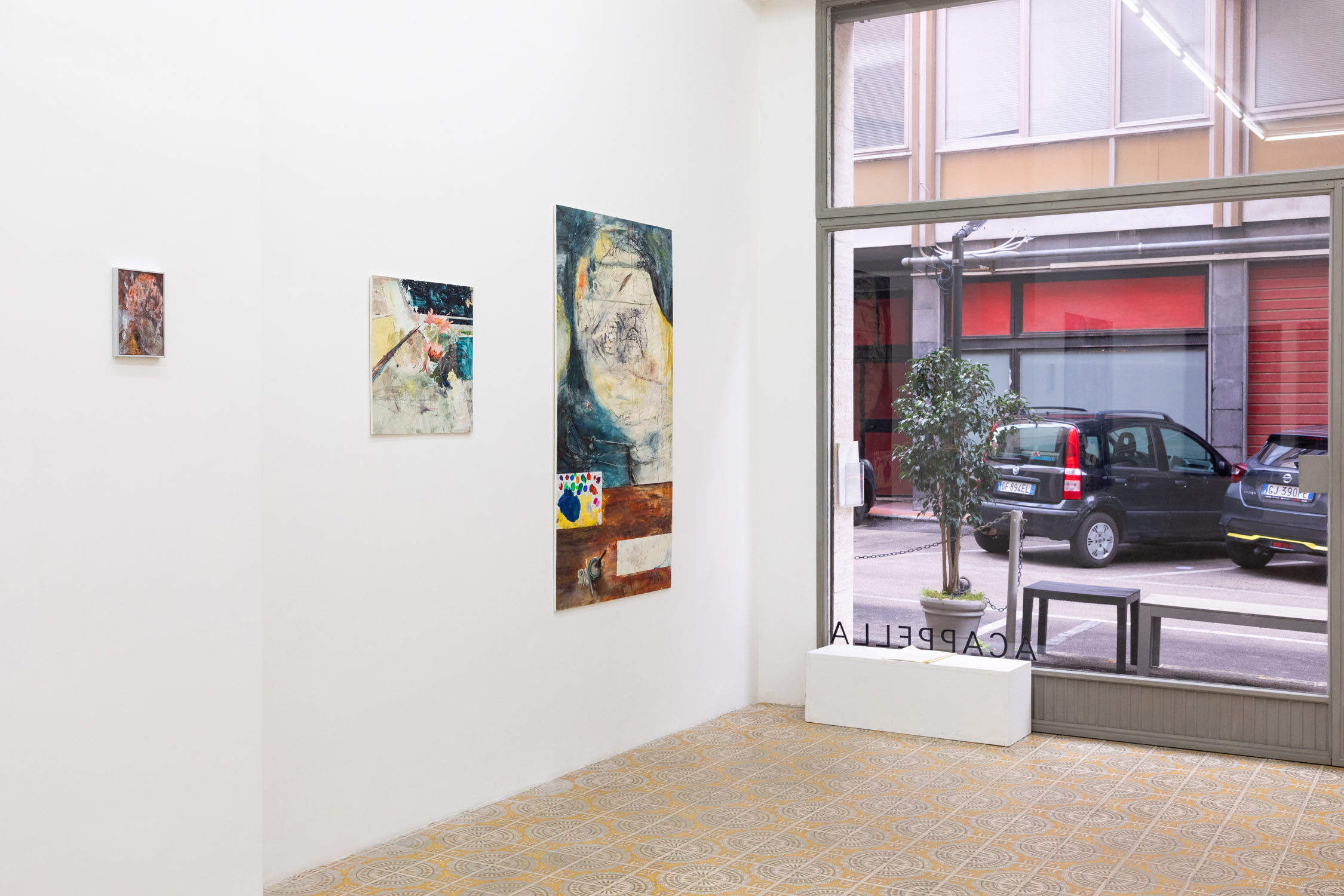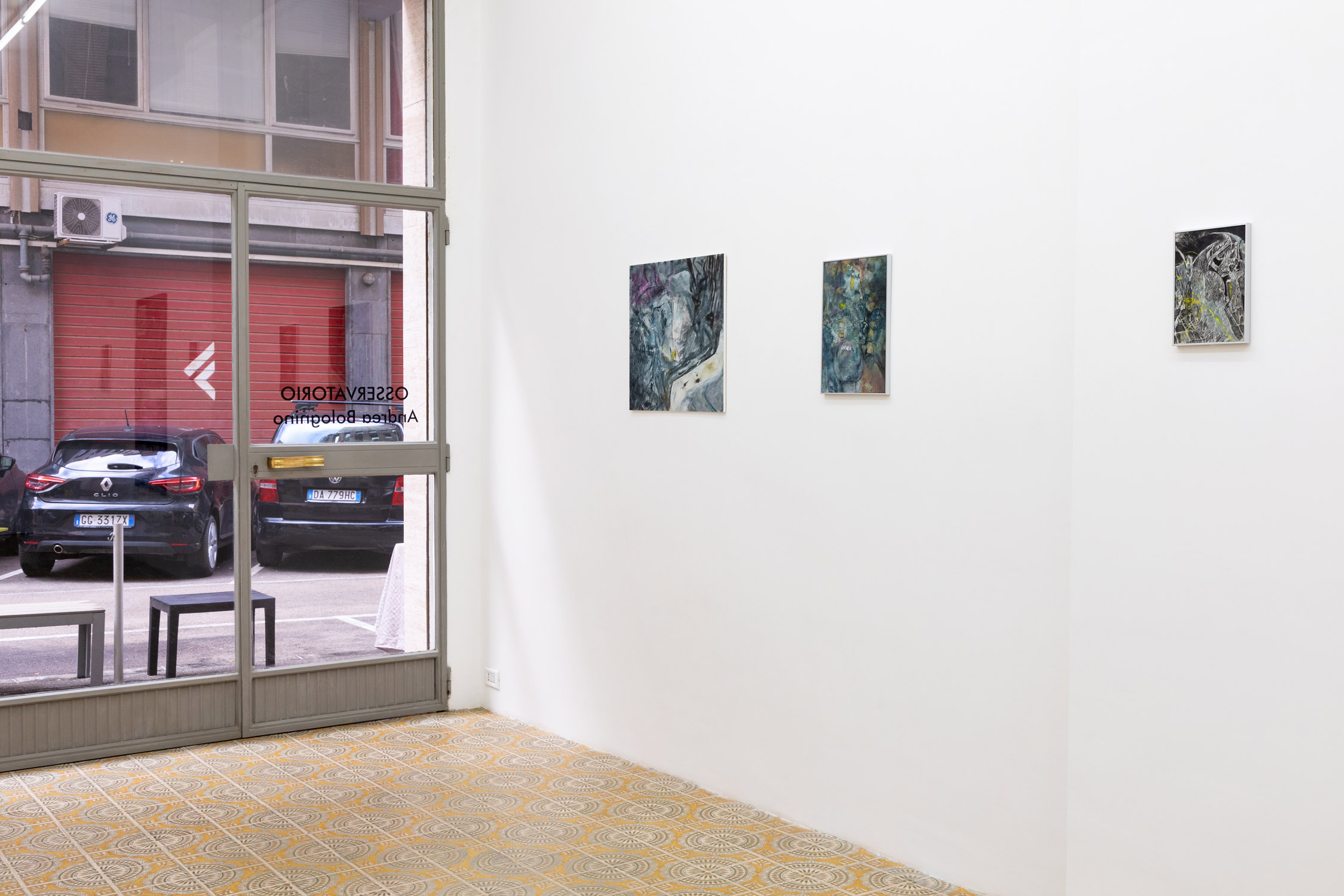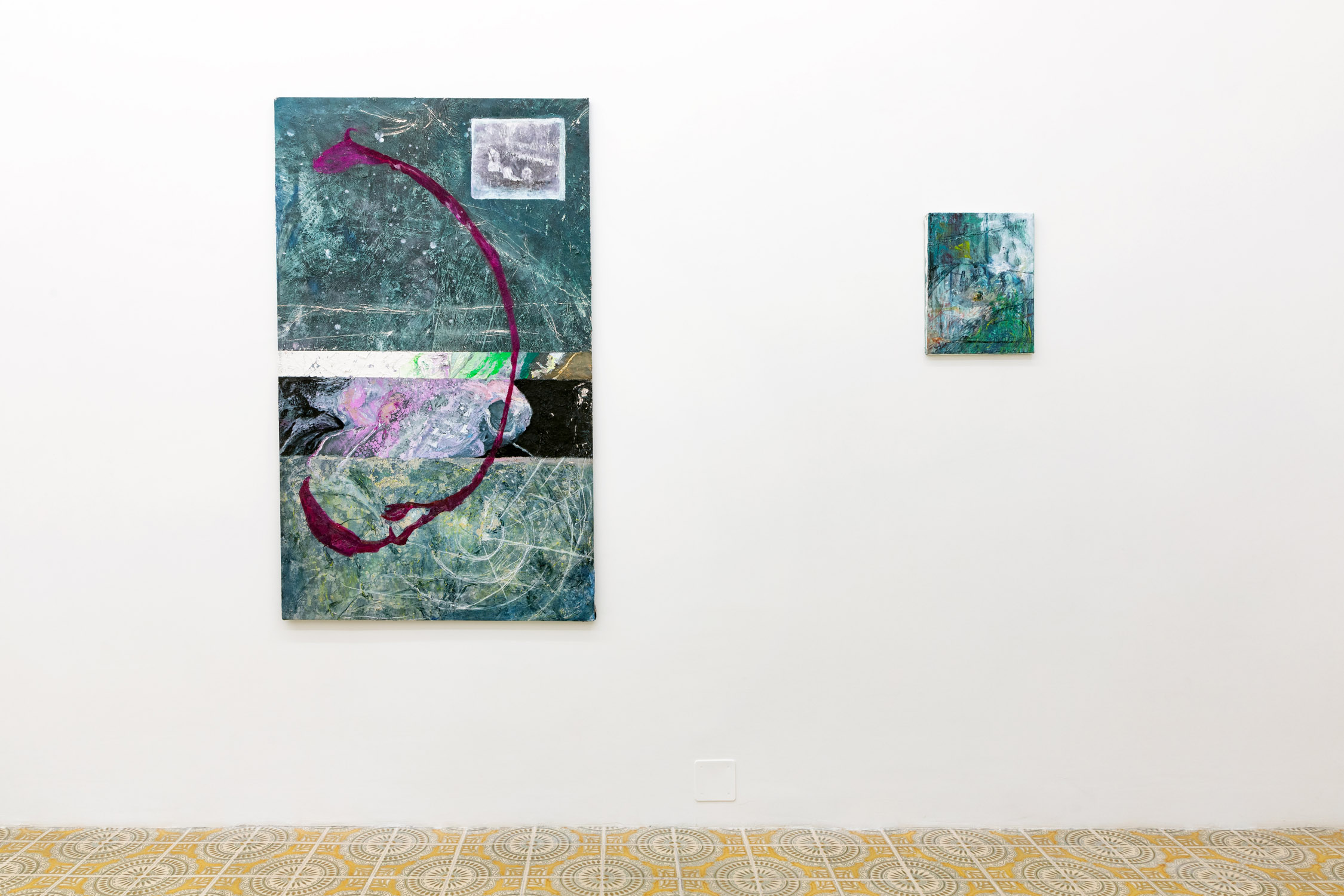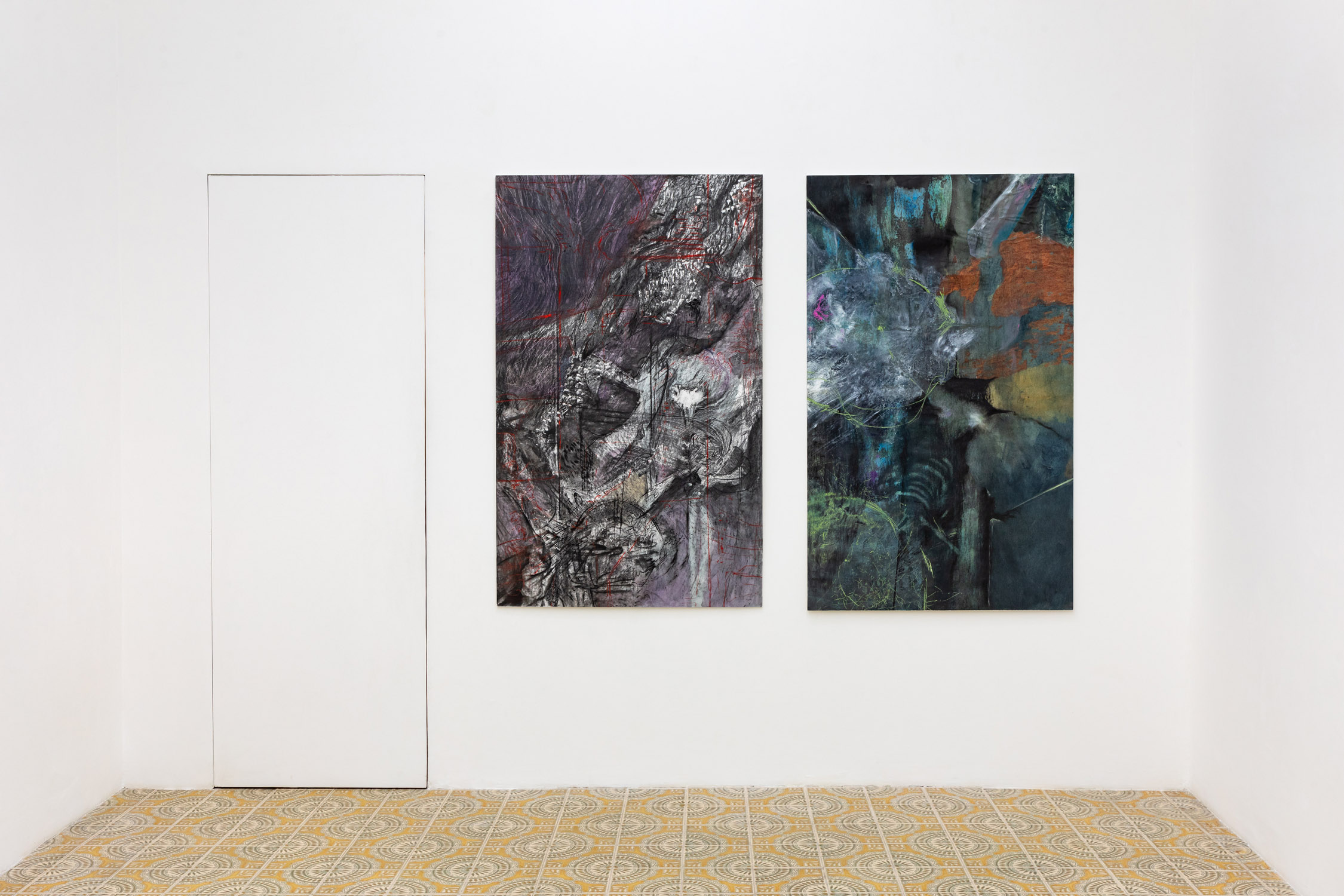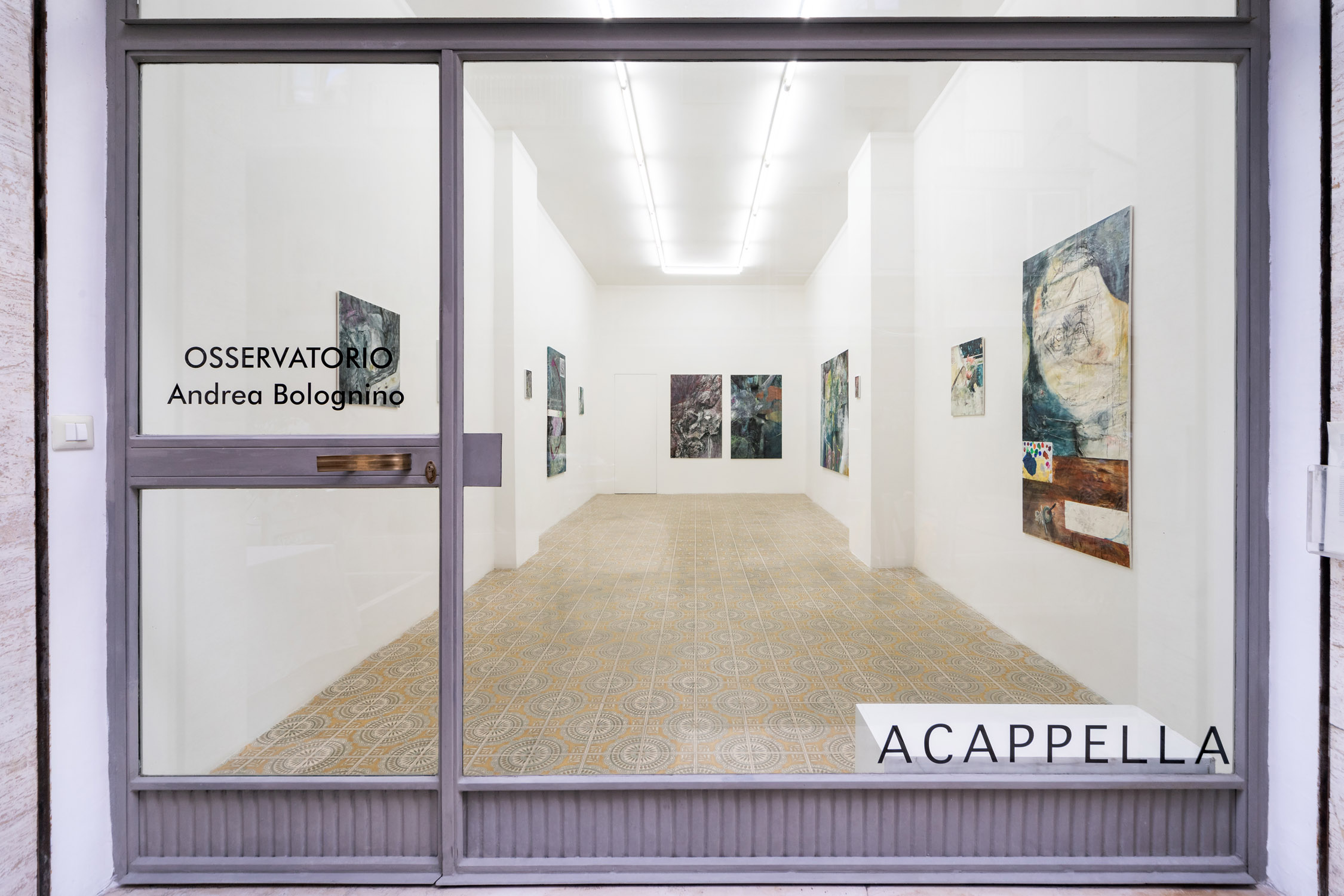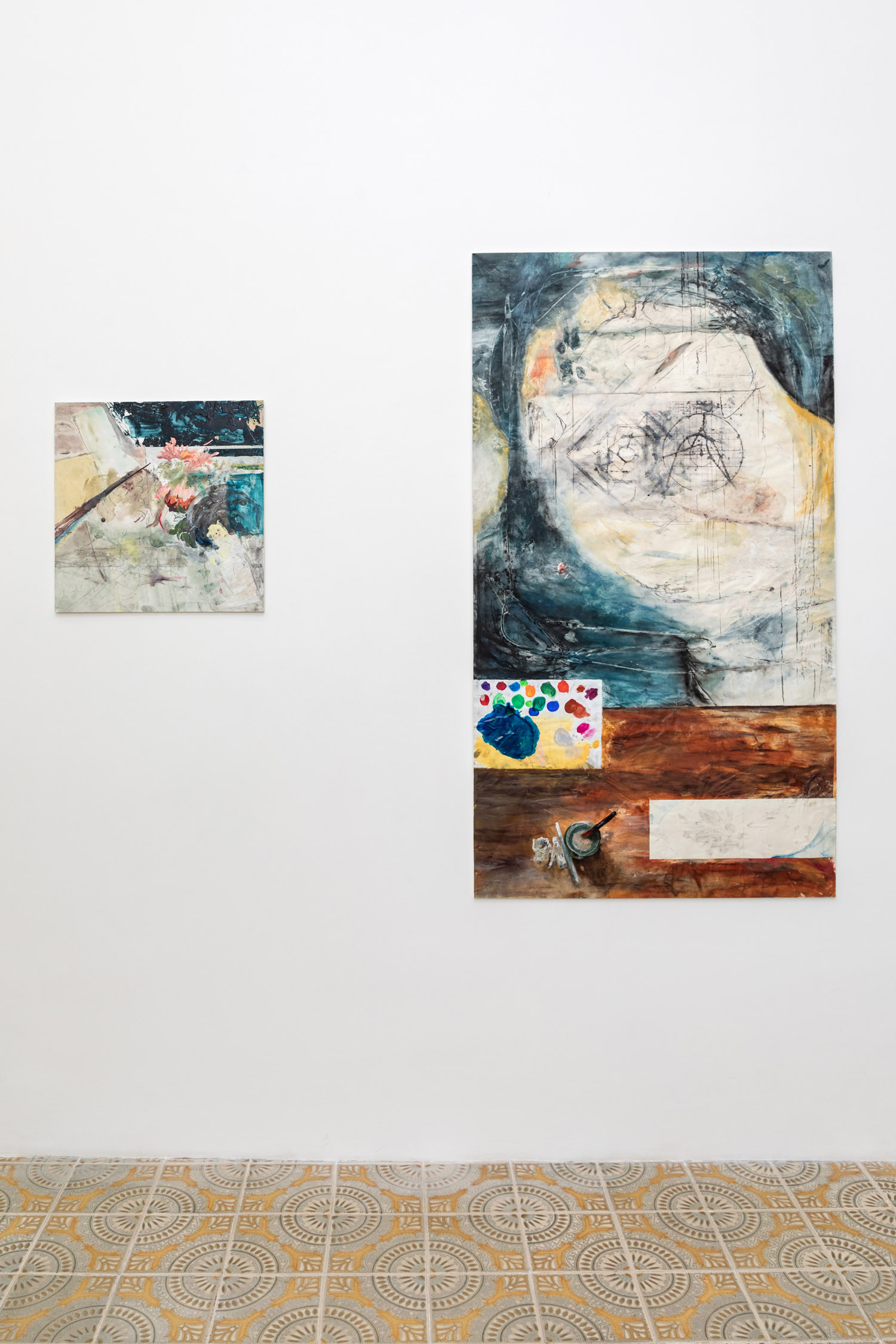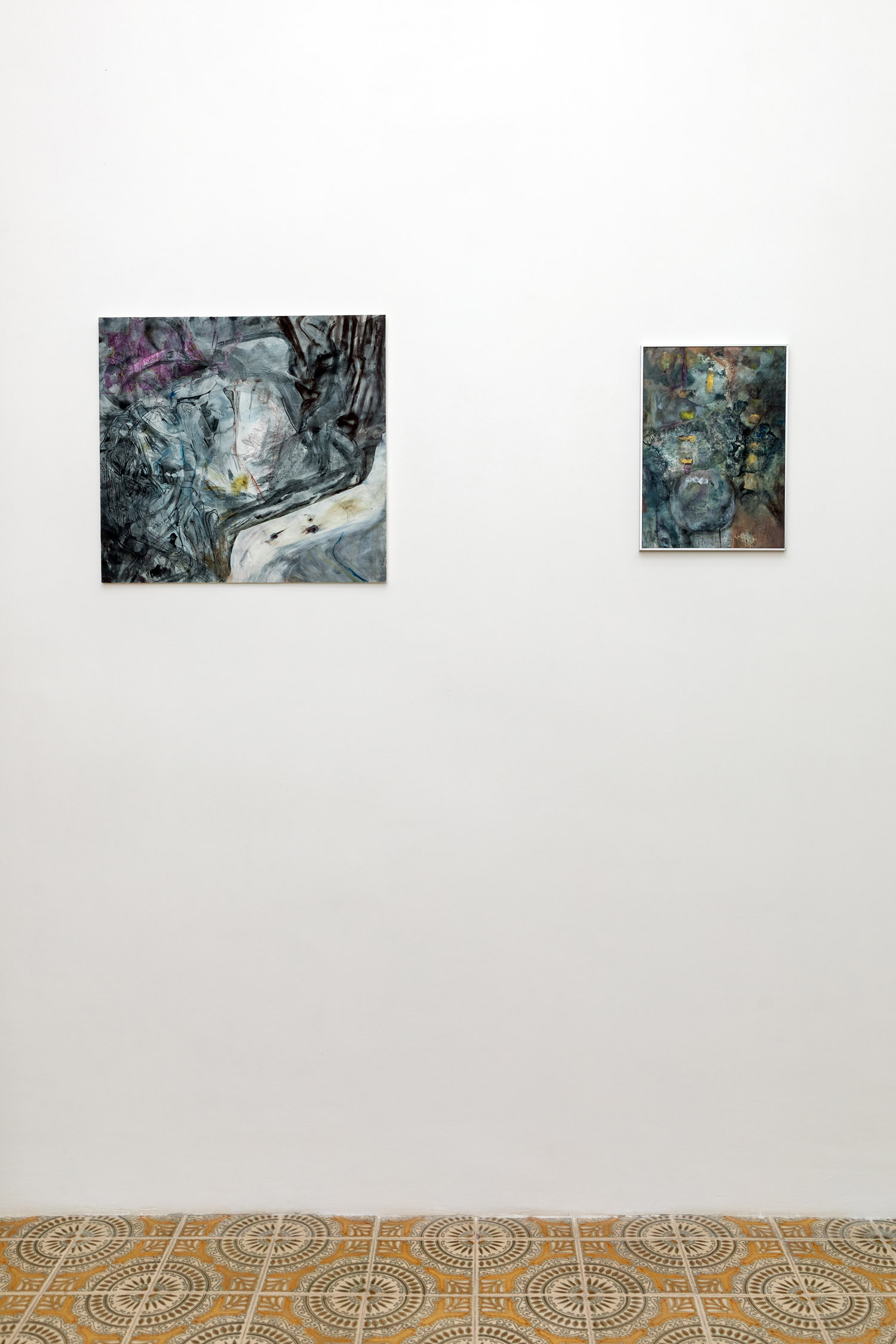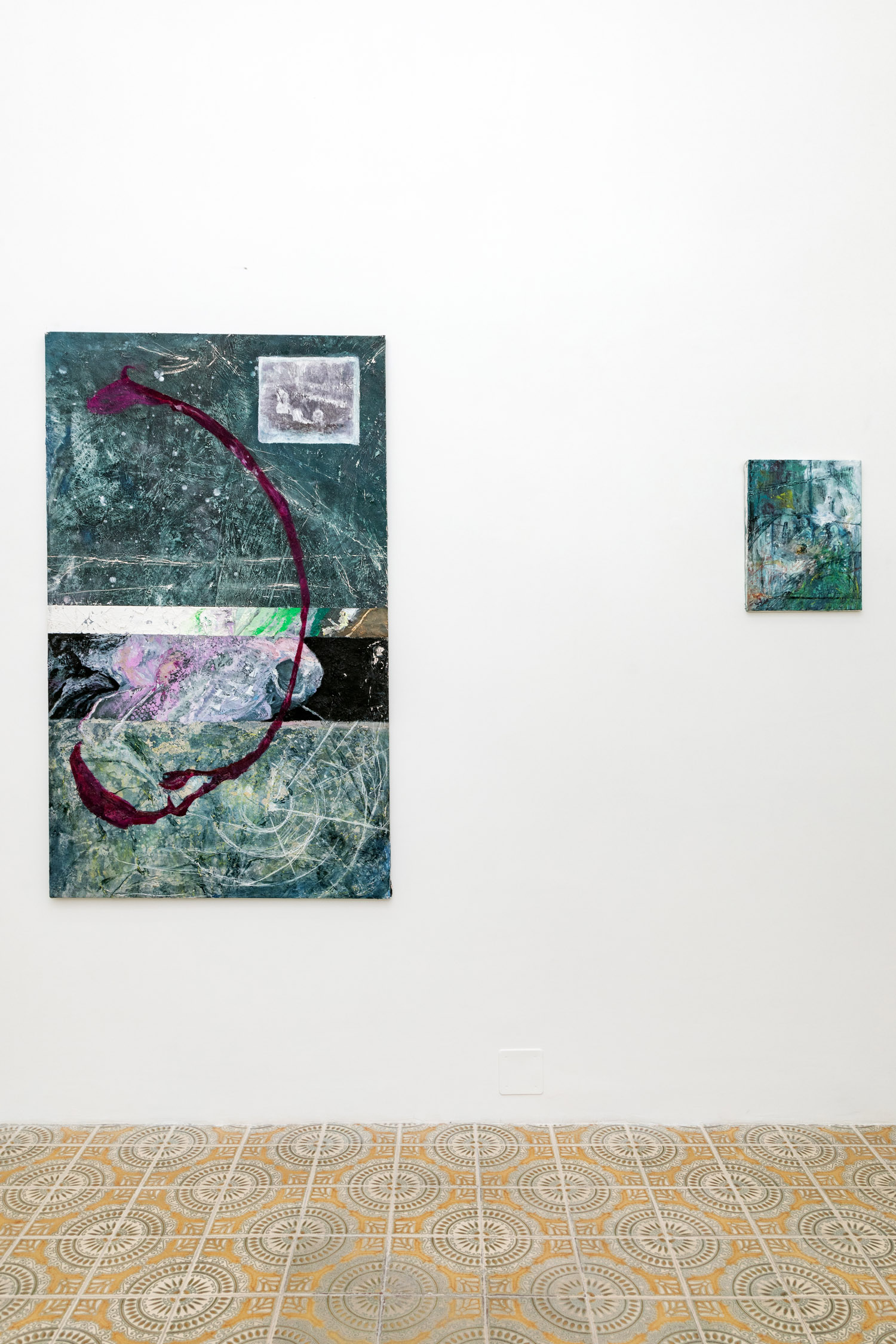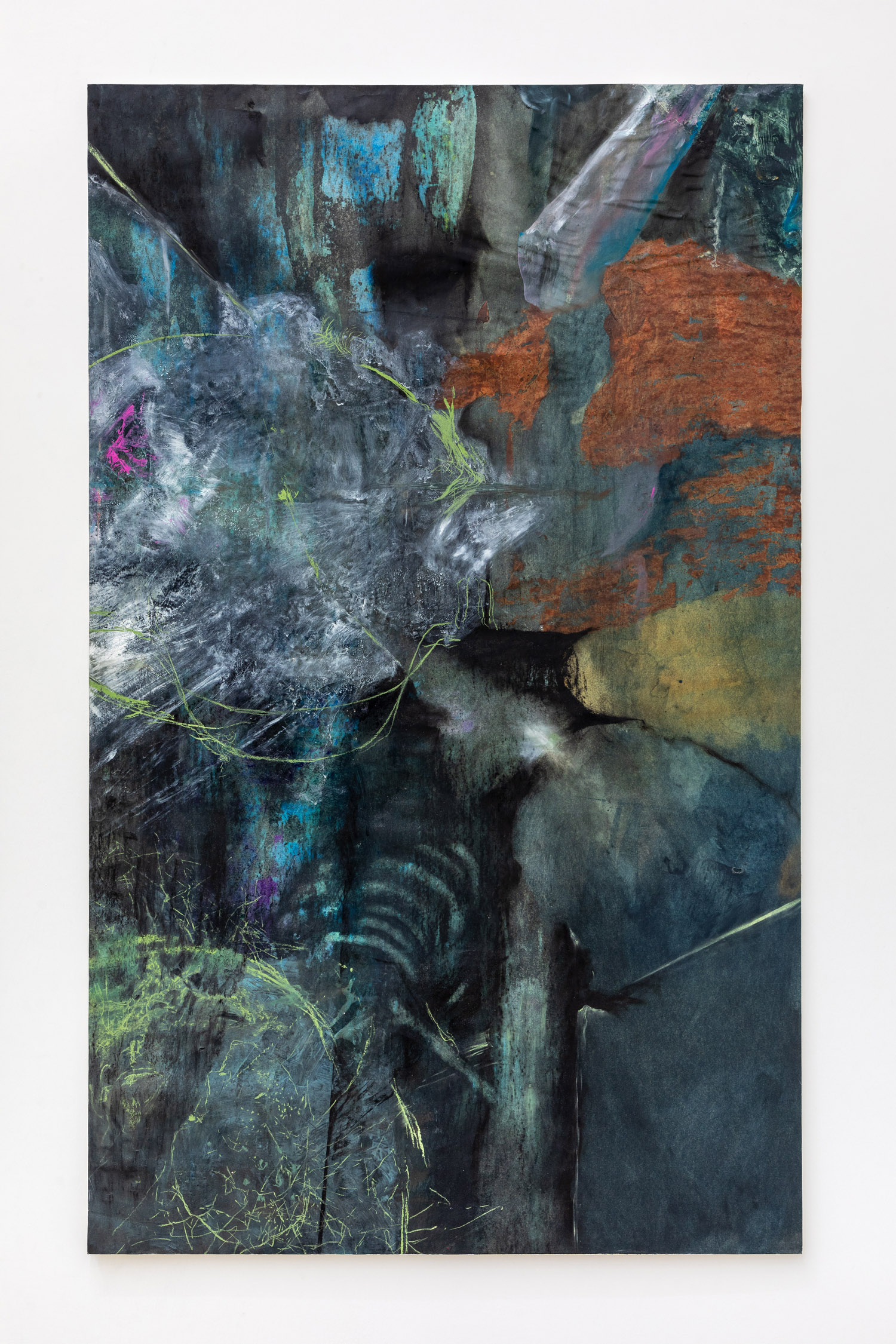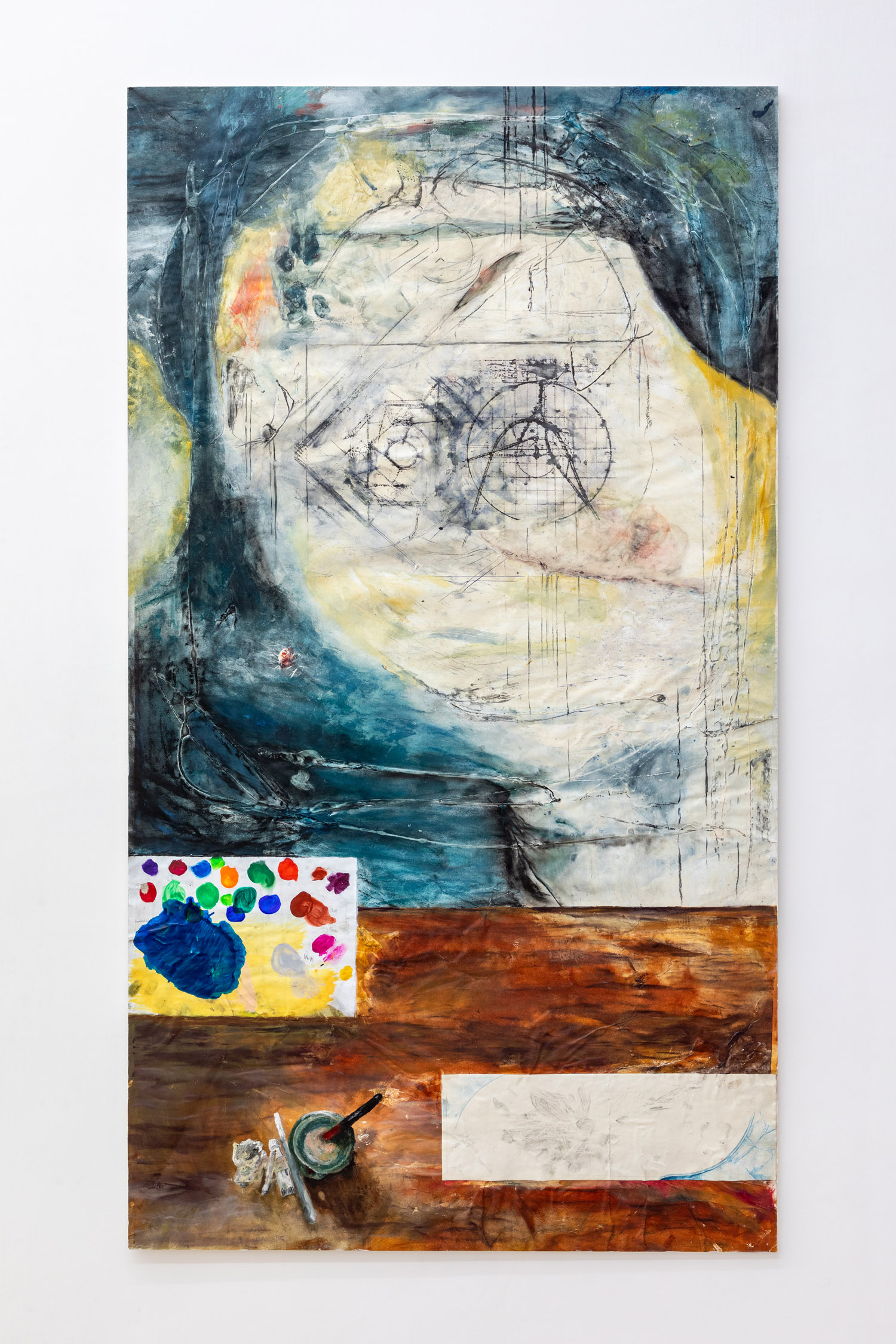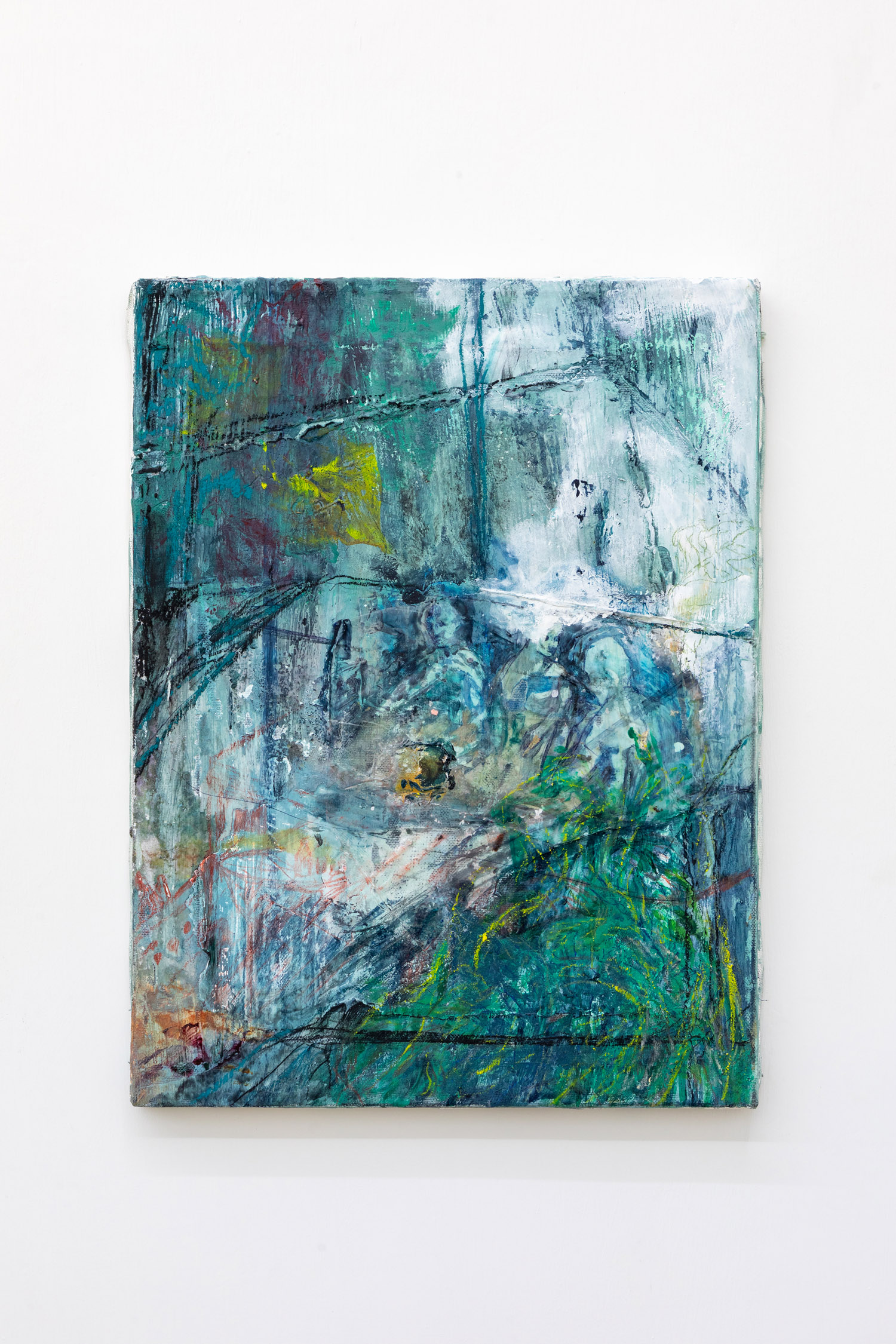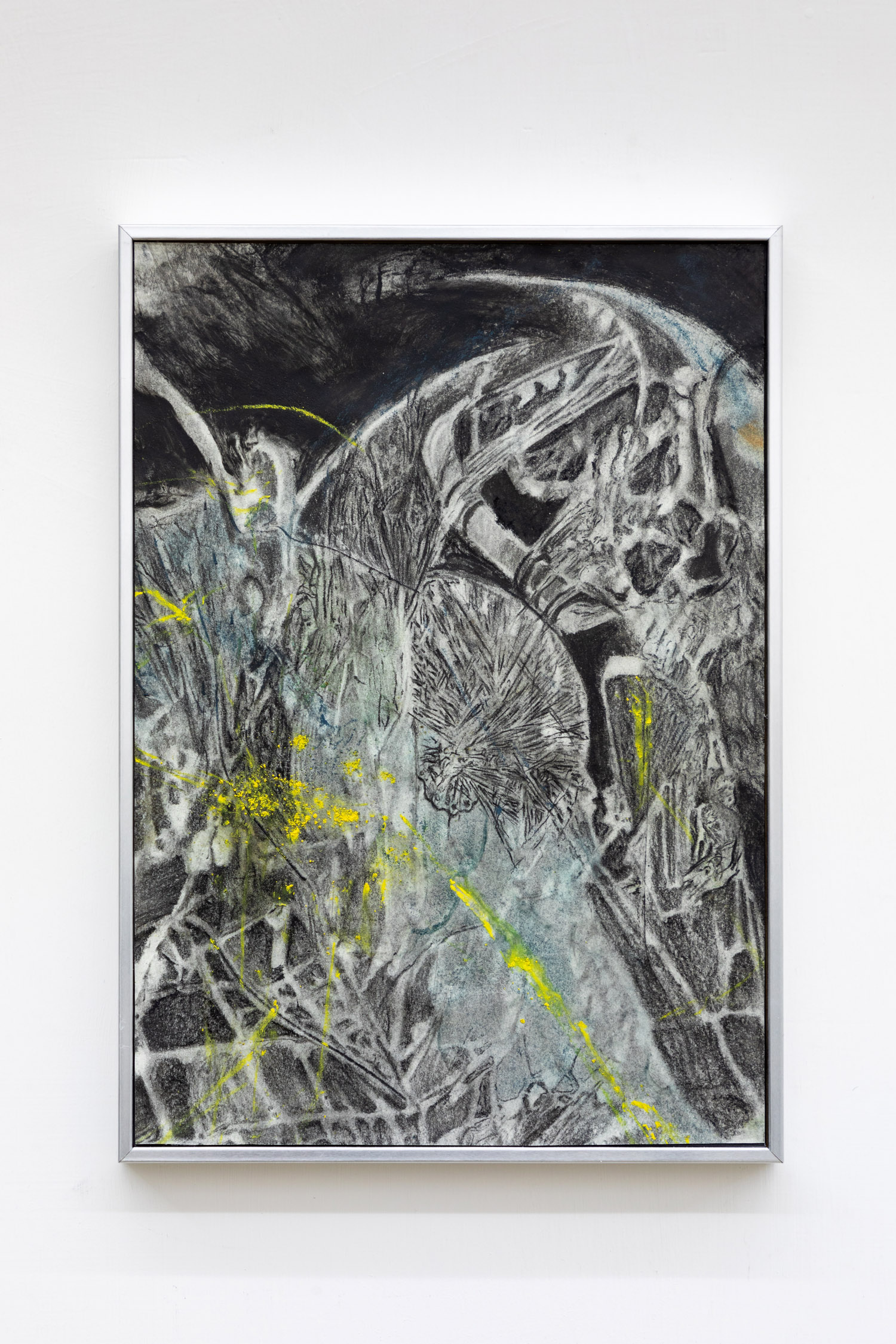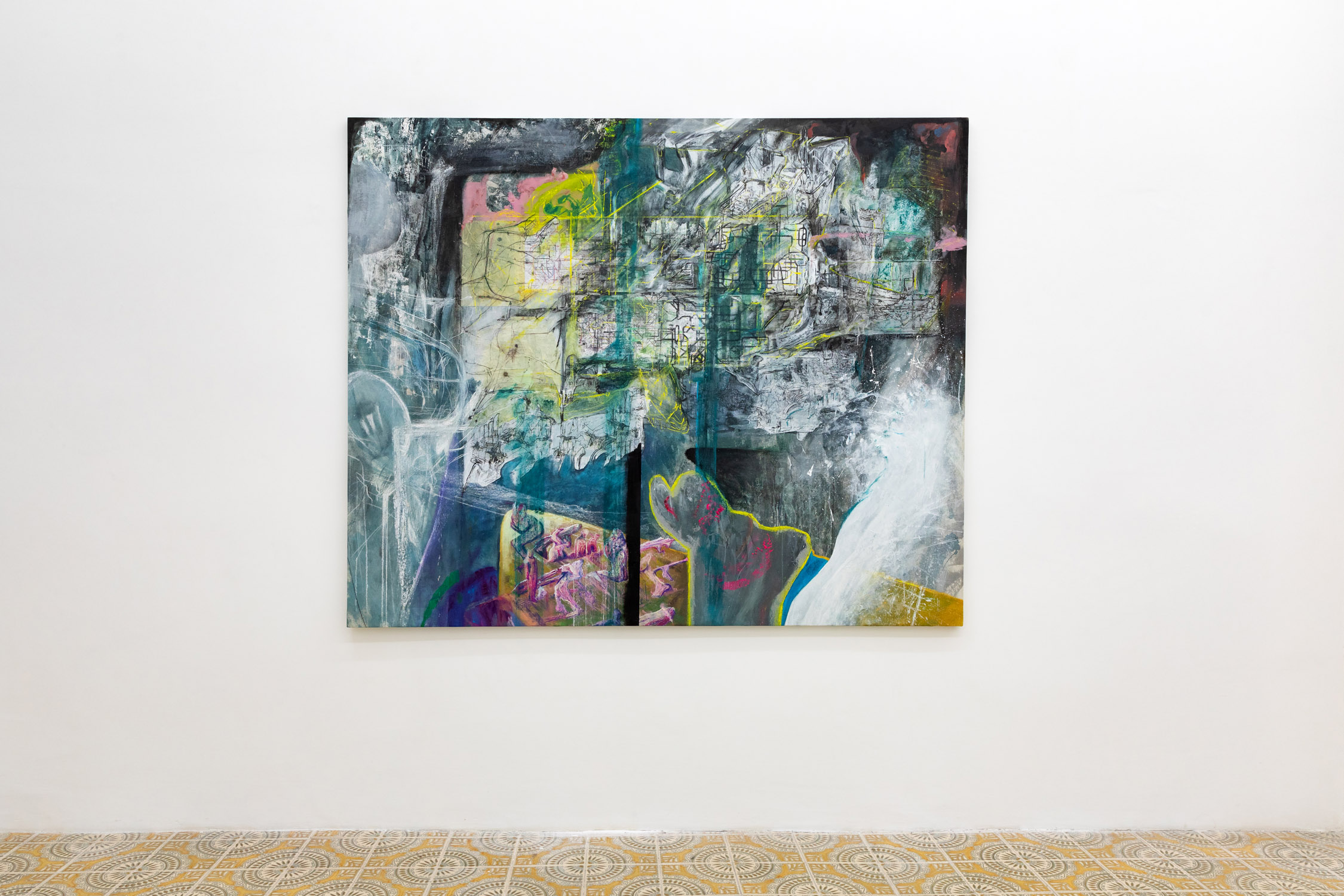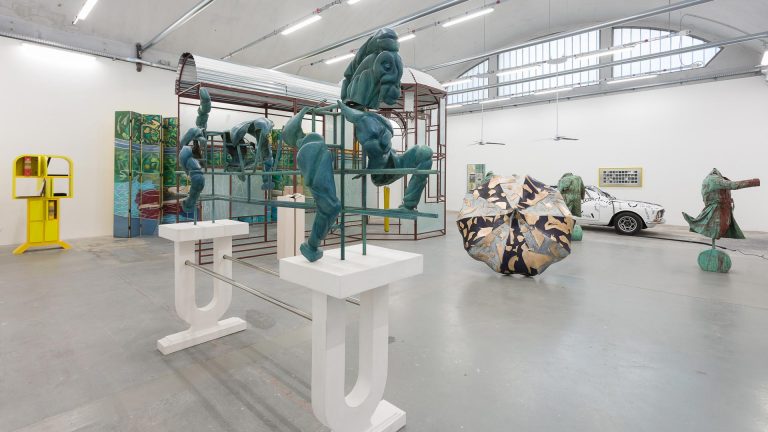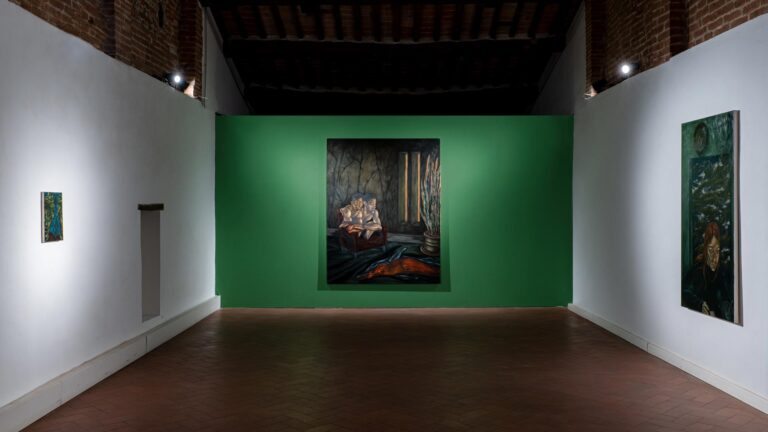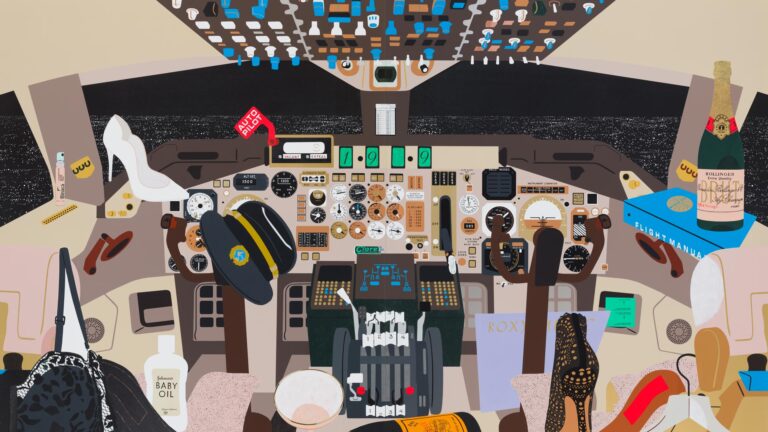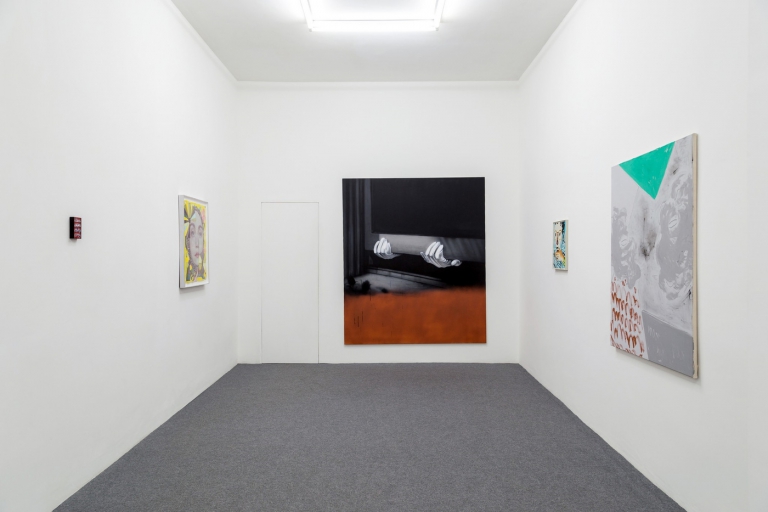Artist: Andrea Bolognino
Exhibition title: Osservatorio
Venue: Acappella, Naples, Italy
Date: March 9 – April 30, 2024
Photography: © Danilo Donzelli / all images copyright and courtesy of the artist and Acappella, Naples
Note: Exhibition text by Lucrezia Longobardi is available here
– What do you like, extraordinary foreigner?
– I love clouds… the clouds that pass… over there… over there… the wonderful clouds!
Charles Baudelaire ‘Small poems in prose’
Andrea Bolignino wanted a change of scenery and has returned to Naples to show Osservatorio, a collection of new works that once again impress with the firmness of his research. Bolognino is currently living in Munich, where he has made friends with the many young German and foreign artists who live in the Bavarian capital. Is it the familiarity of the collections of the Lenbachhaus and the Blaue Reiter that have nurtured his sensibility? Andrea speaks of Franz Marc, Kandinsky and the children’s drawings housed in this extraordinary museum. Already last year, the costumes he designed for Tauromachia, the sensitive performance he created with his brother Adriano Bolignino, had given us a glimpse of how, since the fulgurations of the eye at the exhibition in homage to Breughel the Elder’s Parable of the Blind at Capodimonte, his gaze had broadened to include movement and space. This movement is now splendidly expressed in his large- scale drawings on canvas, which seem to blur the boundaries between painting and drawing, a technique he has long favoured above all others. Drawing may no longer be the language of study, elaboration and design, but it is materially or conceptually the demonstration of thought, the strongest link that unites the arts. Bolognino gives drawing a new reasoning, suggesting once again that beauty has its own energy and its own logic. What is the power of the artist in developing his energies, his flights of imagination, these explosions that spread across the canvas like dazzles or stains? Surrealism, from Yves Tanguy to Roberto Matta to Arshile Gorky, paved the way, but Bolognino comes from a different background, and his anamorphic compositions pursue forms of reality, abstract and imaginary landscapes, where the form drives itself in dialogue with the artist or with the artificial intelligence that activates its own analyses in the development of the form. The result is a new chromatic and formal dazzle, where the reasons for beauty blend with those for reverie.
-Sylvain Bellenger
